Mark Amery – 19 December, 2010
For me these images don't carry the sense of unease photography of interiors has historically been loaded with. I'm far too busy enjoying the smudge between location and Photoshop, the trompe l'oeil blur of their visual reading, and the clever musical play with light, material, space and line, to think about context.
There’s a whole swag of artists out there right now exploring the dynamics of empty interior space. It’s as if they’re caught between the gallery cube and the need to engage with the real world, but can’t yet quite go there. Interested in engaging with context and site, but ultimately use volumes as vessels that allow them to play safe with a three-dimensional modernist aesthetic.
Of course no space is really empty. Traces remain of its history and light plays through it as a physical container. The common assertion then is that, despite the presence of the artist being hidden, these are psychological spaces. That some spectral presence might be able to be picked up on.
This is also arguably commercially palatable. The work looks fresh but in structure still speaks a very familiar formal language. It’s art that can move freely across contexts and continents, and doesn’t engage with the complexities of identity, cultural politics and location. Just consider the amount of photography concerning storage facilities, museums and archives. It keeps the subject matter on the shelf, at a remove. Compare this say to the dangerous tactile engagement with a so-called ‘cultural object’ in a Fiona Pardington photograph.
I mused on all this looking at Jennifer Mason‘s exhibition Spatial Disruptions at Suite’s nifty little city satellite space on Oriental Bay (their main gallery remains in Newtown), and also reading an accompanying text by Bruce E Phillips, entitled Psychological Spaces.
I did so not because Mason’s new work is overly familiar or tired, but rather because she’s actually pushing and playing with these ideas rigorously, finding new space in this comfortable ground. Whilst occasionally teetering into banal vacancy, mostly she provides on the ragged lip of that space a lot of subtle, sophisticated and involving play within the photographic chamber.
I had more issue with the essay. Specifically Phillips’ assertion of these as psychological spaces. I didn’t find the work asking me, as Phillips tells me it does, to imagine these rooms’ past.
Mason‘s empty photo-shopped domestic interiors may be intended to operate as disturbed sites of memory, but they have none of that charge for me. The digital sewing together of interiors and walls to disrupt and change our readings of space presents some terrific puzzles. Yet that trickery does get in the way of any emotional effect intended by the constant opening and closing of doors and opening and closing of curtains within the works.
Cleverly, the rooms depicted are in relocated houses, sitting on an otherwise vacant lot somewhere awaiting purchase. The sunlight outside their windows then bears no relationship to these rooms proper position in either the past or the future. In present situ they are already physically dislocated, cut up, rearranged and plonked together like sculptural arrangements.
Mason’s digital rearrangements divorce them from terra firma even further. She unfolds their corner creases and put them back together as if a house interior were a taped together concertina, leaving little room for distressed ghosts. And unlike Lisa Crowley’s photographs of vacant state home interiors I wrote about a few weeks back, these aren’t wired up physically or conceptually to the national grid
For me these images don’t carry the sense of unease photography of interiors has historically been loaded with. I’m far too busy enjoying the smudge between location and Photoshop, the trompe l’oeil blur of their visual reading, and the clever musical play with light, material, space and line, to think about context.
More, I’m reminded in Mason’s panoramas - and I mean this in a good way, that could be developed upon - of the marketing ploys of the real estate industry. Their wish through words and photography (including those 360 degree sweeps) to unfold and give a widescreen flow to old interior spaces, opening them out to an unlimited range of furnished futures. Mason’s work would sure look smart on an Oriental Bay apartment wall.
Mason’s previous work has also played richly within the seams between fact and fiction. Documentary and theatre were blurred, with some genuine unease - again on the lip of things - in the slightly stagey frozen family domestic scenes.
This new series might seem almost a reaction against the theatrical and psychological clutter of those images. Yet the works share a similar complexity in thinking about the photograph’s relationship to the space it inhabits. They also share an interest in pushing the craft of photography as well as some concepts. And Mason continues to dramatise with light the unglamorous and mundane (muted photographic colours, peeling beige wallpaper, threadbare nondescript carpets and cheap blinds).
The lead work here is a lightbox with as title the real estate lingo: Positioned to Capture Loads of Sunshine. Naturally this house isn’t positioned in such a way. So instead Mason has inserted into a Box Brownie shaped bedroom, in front of the existing window, a fake wall that like a mirror, reflects back the light and intersection of the doors and passageway in the centre of the house. It’s the view presumably found behind the camera. Light still leaches out from behind this fake wall, and it’s deliciously difficult to work out whether this is actually a mirror in the physical space, or a Photoshop job.
The panorama images here are less subtle. There’s much fun to be had however with trying to detect whether some windows and doors are repeated (just photographed from different angles) and where the seams between the original photographs. Sometimes this is difficult to determine, at other times Mason seems to relish pulling off what in reality would be impossible - a window for example, that extends right up to the outward bending corner of a wall.
The exhibition also becomes a meditation on the camera as a chamber - sealed but with apertures to let the light in. The rooms are darkened spaces of subtle shadow play, with windows masked by blinds and doors in various active states of opening and closing. And neatly amplifying the play within line and light in the work itself, this small Suite gallery itself is an askew lightbox, the front doors at an angle to its box shape.
Since its inception Suite has shown a strong interest in contemporary European and New Zealand photography, and this is clearly getting stronger. It’s encouraging to see them giving strong attention to the work of such an interesting emerging artist.
Mark Amery
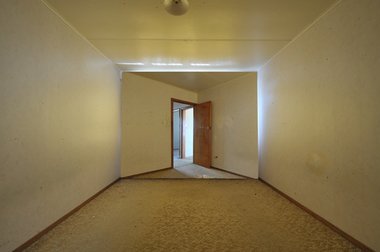
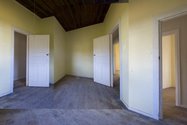
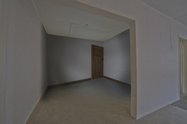


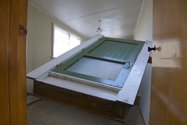
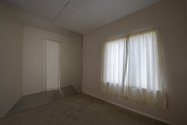
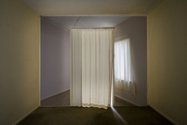
 Advertising in this column
Advertising in this column Two Rooms presents a program of residencies and projects
Two Rooms presents a program of residencies and projects



This Discussion has 0 comments.
Comment
Participate
Register to Participate.
Sign in
Sign in to an existing account.